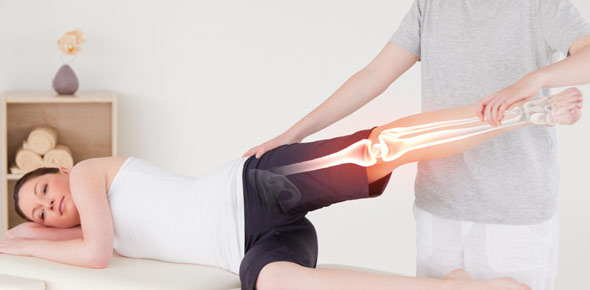You should not elevate the shoulder past 90 degrees after surgical...
The scaphoid bone heals easily and quickly
When splinting for carpal tunnel syndrom, the wrist should be at 90...
Tendon gliding exercises for carpal tunnel include the following...
Reduction with cast immobilization is an appropriate non-surgical...
Ulnar nerve compression, also known as cubital tunnel syndrome, causes...
De-Quervain's Tendonitis involves the abductor pollicis longus (APL)...
Radial head fractures result from a fall on outstretched extremity
The mill's test combines elbow extension with wrist flexion
The empty can test pinpoints a supraspinatus tear
Rotator cuff impingement occurs when the supraspinatus is impinged...
The Neer's test is appropriate to identify rotator cuff impingement
The device used to measure grip strength is a
Carpal Tunnel Syndrome is a neuropathy of the radial nerve
Assessment for dupuytren's contractures includes ROM, Pain, Edema,...
A smith's fracture is a reversed colles fracture
Lateral elbow pain caused by cumulative trauma to origin of the wrist...
Treatment considerations during the acute phase of lateral...
Medial epicondylitis causes pain with resisted wrist flexion
Splinting for Duypuytren's contractures places the wrist, MCP and IP...
The most commonly fractured carpal bone is the
Clinical examination includes
Ice is used to treat chronic trigger finger
Medial epycondylitis is also known as tennis elbow
Distal humeral fractures result from high energy injuries
A volumeter is used to test for
Dupuytren's contractures eventually result in a flexion posturing of...
Bicipital tendonitis can be caused by rotator cuff impingement, or the...
De-Quervain's tendonitis is diagnosed using this test
A scaphoid fracture often results from the patient punching another...
Intrinsic muscles consist of
Using the Semmes Weinstein Monofilament Test, a therapist may test up...
A carpal tunnel splint should be worn
Preoperative treatment for Dupuytren's contractures are
Guyon's Tunnel Syndrome is a neuropathy of the ______ nerve
In the initial/acute stage of conservative shoulder management the...
The following are standardized tools for functional assessment of the...
The sensibility test that consists of using a monofilament applied to...
The first 2 weeks of elbow fracture the therapy interventions include
The functional retraining stage of conservative shoulder management...
When performing a clinical examination, you should observe and inspect...
Initial contact for flexor tendon injuries is 1 week post-op
When following the early controlled motion protocol for flexor tendon...
Trigger finger is caused by a nodule at the A2 pulley that causes the...
Precautions for surgical repair of rotator cuff include (choose all...
Symptoms of Guyon's tunnel syndrome include all of the following...
Dupuytren's Contractures initially presents with palpable
Post operative treatment of carpal tunnel syndrome includes
AROM exercises for duypuytren's contractures begins at 4-5 days...
Colles fracture is a proximal radius fracture that results from fall...
Evaluation of elbow fractures includes (choose all that apply)
Ulnar nerve compression is aggravated by elbow extension
To avoid adhesions in carpal tunnel, a patient should be instructed to...
When following the immobilization protocol for flexor tendon injuries,...
Evaluation for carpal tunnel syndrome may include (choose all that...
Therapeutic management for ulnar nerve compression/cubital tunnel...
The cozen's test for lateral epicondylitis produces pain upon wrist...
The following are methods used to control edema (choose all that...
Pain management for carpal tunnel syndrome includes icing,...
Treatment for medial epicondylitis includes
Tests to diagnose rotator cuff tears include
Treatment for guyon's tunnel syndrome includes the following:
Immobilization is the treatment of choice for
Possible causes of rotator cuff tears include (choose all that apply)
Fractures of the olecranon process (choose all that apply)
Weeks 2-8 for elbow fracture include the following therapy...
Splinting choices for lateral epicondylitis include (choose all that...
In the intermediate stage of conservative shoulder management the...
With flexor tendon injuries, complete immobilization of repair is
Treatments fro trigger finger include (choose all that apply)
Hand conditioning treatment for carpal tunnel syndrome includes...
When evaluating flexor tenon injuries (choose all that apply)
Therapist management of De-Quervain's tendonitis includes
Choose the correct treatments for scaphoid fracture (choose all that...
Conservative treatment techniques for the acute phase of lateral...
Therapy goals fro distal radius fractures are (choose all that apply)
Colles fracture is caused by
Elbow fractures have a higher complication rate and poorer outcome....
Tests to diagnose lateral epicondylitis include
Indication for treatment of Dupuytren's contracture are (choose all...
Tests to identify bicipital tendonitis include
The preoperative treatment focus for dupuytren's contractures includes...
Treatment considerations for a boxer's fracture include
Assessment guidelines for ulnar nerve compression/cubital tunnel...
















